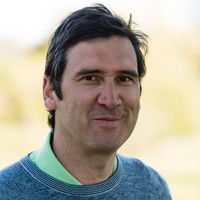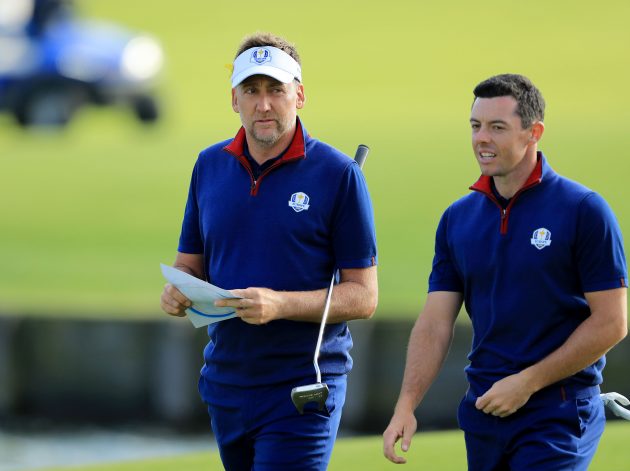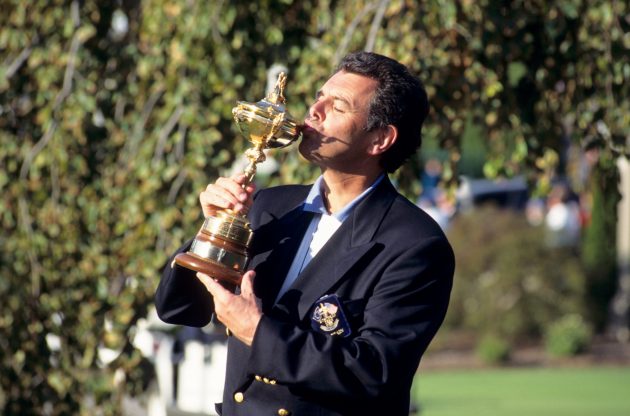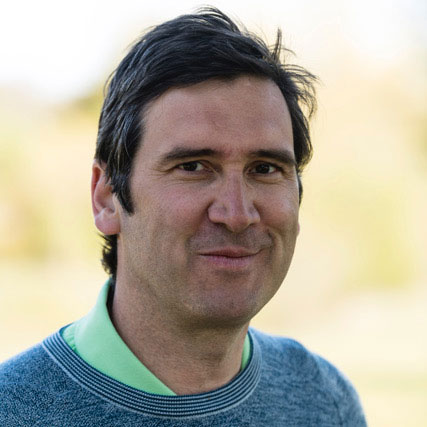How Are Ryder Cup Pairings Decided?
Like with like? Do opposites attract? Where do personalities fit in? We look at how the captains may determine their pairings this week and hear from Bernard Gallacher on Seve and that infamous Faldo-Gilford alliance


Like with like? Do opposites attract? Where do personalities fit in? We look at how the captains may determine their pairings this week and hear from Bernard Gallacher on Seve and that infamous Faldo-Gilford alliance
‘Boys, there’s nothing to being the captain of the Ryder Cup.
You guys are all great players. Pairing is really easy, I’m going to pair together you boys who drive crooked and I’m going to pair together you boys who drive straight.
And the first ball’s going to be hit by Julius Boros ‘cause he don’t give a sh*t about anything.
So y’all just go play your game.
You got got these uniforms here.
If you don’t like the way they fit or whatnot, don’t wear them.
Subscribe to the Golf Monthly newsletter to stay up to date with all the latest tour news, equipment news, reviews, head-to-heads and buyer’s guides from our team of experienced experts.
I never could play in somebody else’s clothes.
Doug Sanders, if you want to come out here and dress like a peacock, that’s fine. Whatever you want.
But let me tell you boys one thing – I don’t want my name on that trophy as a losing captain.’
This was Ben Hogan’s speech on the eve of the 1967 Ryder Cup, a match that ended in a record 23.5-8.5 victory for the hosts in Texas.
If you want an idea of how far the matches have come since then, for Paris in 2018, the planning for Europe’s win was 22 months in the making.
That’s when the 15th Club were signed up to help Thomas Bjorn with all his statistical needs and, whether it was data on the wildcard picks and even how many wildcards Bjorn should have in the first place, they would be on hand to furnish Team Europe with everything on everyone.
Things didn’t just start on the Monday morning of Ryder Cup week, coming to France pretty much all their work had been done.
This was the most penal course on the European Tour circuit when you missed a fairway and low driver use was a major factor and the player teeing off off on the odd holes would have more key drives with the even player having more key approaches in the foursomes.
Each player was identified with two optimal pairings options for both formats and, among their recommendations, it was suggested that Tommy Fleetwood and Francesco Molinari should feature in every session as they suited the course, and each other so well, Paul Casey and Tyrrell Hatton were best placed for fourballs, Henrik Stenson should be employed as an approach-heavy partner for Justin Rose, likewise Ian Poulter with Rory McIlroy.

From then on it was simply, easier said than done after an early 3-1 reversal, a case of sticking to the plan and almost being ignorant of the scoreboard.
Another interesting aspect was the common-sense approach of looking beyond results.
For instance Paul Casey and Tyrrell Hatton lost their opening fourball to Justin Thomas and Jordan Spieth and yet Casey was the best player on Europe’s side, with 5.83 strokes gained on the field, and Hatton was third.
They were retained on the Saturday and duly came through with a point.

Going back to Paul McGinley’s management in 2014 one of many of his achievements was getting the best out of self-confessed loner Victor Dubuisson.
He employed a fifth vice-captain to look after those players not playing and, at Gleneagles on the Friday morning, the Frenchman and his partner Graeme McDowell would go out a couple of holes behind the main matches to get a taste of things.
Dubuisson didn’t have to attend all the team meetings, he and McDowell were incredible and he ended the week unbeaten.
This week there will be all manner of help behind the scenes, with psychologists, physios and helpers coming from every angle to try and get each team over the line.
There will be talk of personalities and pods and, for the first two days, there will be 16 points up for grabs.
Related: The Ultimate Ryder Cup Snub - "Most unfair decision I've ever heard of in golf history"
Bernard Gallacher captained three European teams and oversaw some of the greatest Ryder Cup partnerships ever.
“The first two days consume most of the points so they are obviously very important," Gallacher tells Golf Monthly.
"During my time there were natural pairings like Seve and Olazabal, Nick Faldo played with Colin Montgomerie and then the likes of Sam Torrance and Bernhard Langer could play with anybody.
"What you started up then with the pairings was often not what you ended up with and your thinking would go out of the window – I ended up putting Costantino Rocca and Sam Torrance together and I never had them in my wildest dreams.
"They had a good laugh and their chemistry was great.
"I was hoping that Rocca would play with Seve but Seve was playing so poorly and I didn’t think it was fair on Rocca. I didn’t even think of them but they sort of fell together and they won points.”
Gallacher is one of just four European captains to win on American soil along with Tony Jacklin, Bernhard Langer and Jose Maria Olazabal, and this week Padraig Harrington will be desperate to join them.

Part of the Scot’s strategy back in the 90s was to make sure everyone got a game in ahead of the singles, something that we will probably see, unless someone has a chronic loss of form, happen by the close of play on Friday.
“I always said to the players before the start that they would all play some part in the matches before the singles and that was the first thing that I said to them.
"That kept everybody on their toes and it was only fair that they played before the singles.
"The first thing that I said before every match was that, if there were any problems about who they might not want to play with, to come and tell me but if nobody did then you must allow me to be able to pick the pairings that I want.
"Nobody came forward in all three matches – I can’t imagine the same would be the case with Brooks Koepka and Bryson DeChambeau these days.
“Chemistry comes into it quite a lot but then they might be too good to pair together and, instead of trying to get one point, you want two.
"Like Faldo and Monty in 1995, I put Torrance with Monty and Nick with Bernhard Langer in the Saturday afternoon fourballs and we lost both matches. I went home thinking to myself you’re some captain. So you can overthink it.”
In 1993 at The Belfry, Gallacher had to deal with a situation that was pretty much unheard of in a Ryder Cup, that of Seve not wanting to play in one of the sessions.
Ballesteros and Olazabal were midway through the back nine of the Saturday morning foursomes against Davis Love III and Tom Kite, a match that they would go on to win, when he received the unexpected call.

“Seve was in the middle of the course at the 14th and they phoned me as he knew I would be putting the pairings in and Seve didn’t want to play in the afternoon.
"So Olly and I were standing in the middle of the fairway and trying to remonstrate with Seve and tell him that he had to play.
"But he thought that he was playing so badly and that he needed to practise and eventually he got his way.
"My head dropped and Olazabal’s head dropped, as he was playing well, and that was such an unusual occasion as Seve always wanted to play.
"This was a complete difference in attitude for Seve but his game had really collapsed and that did disrupt my plans.”
Related: 12 of the best Ryder Cup pairings in history
Gallacher is also known as the captain who put together Faldo and Gilford, a pairing that caught plenty of headlines for their apparent lack of chemistry and any sort of chat before shaking hands at the 12th.
“I was leaning on Seve a little bit as he liked to be involved and David was playing so well in the practice rounds and Seve came to me and said that, although he was a rookie, that David had to play in the foursomes, which I agreed with.
"I played my first match as a 20-year-old and I played with Maurice Bembridge in the opening foursomes as rookies and we beat Lee Trevino and Ken Still and I thought that if I could do it then so could him.
“So I put him in with Monty but they lost and then Nick and Woosnam’s partnership had run its course.
"On paper Nick and David should have worked, both don’t say very much but they were so straight and so solid but they got hammered and Nick unfairly got the blame.
"People said that he didn’t communicate with him, I spoke to David straight after the match and he said that they just hadn’t gelled.
"The next day Nick led us off in the singles and he beat Ray Floyd – the task of being a captain is not always straightforward!”

Mark has worked in golf for over 20 years having started off his journalistic life at the Press Association and BBC Sport before moving to Sky Sports where he became their golf editor on skysports.com. He then worked at National Club Golfer and Lady Golfer where he was the deputy editor and he has interviewed many of the leading names in the game, both male and female, ghosted columns for the likes of Robert Rock, Charley Hull and Dame Laura Davies, as well as playing the vast majority of our Top 100 GB&I courses. He loves links golf with a particular love of Royal Dornoch and Kingsbarns. He is now a freelance, also working for the PGA and Robert Rock. Loves tour golf, both men and women and he remains the long-standing owner of an horrific short game. He plays at Moortown with a handicap of 6.